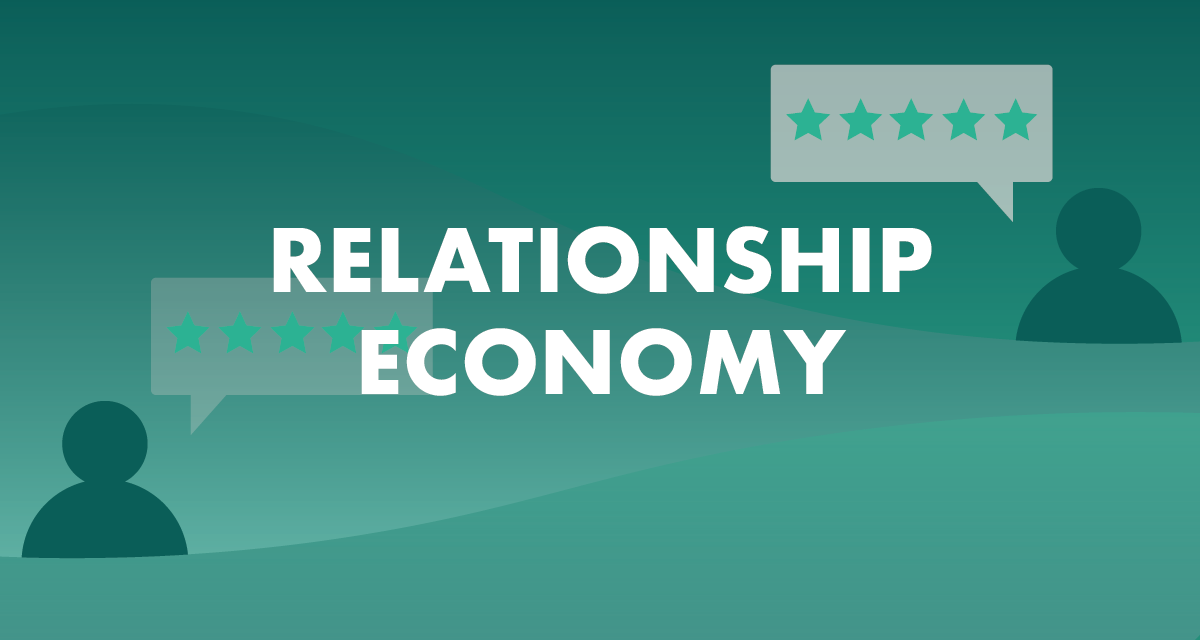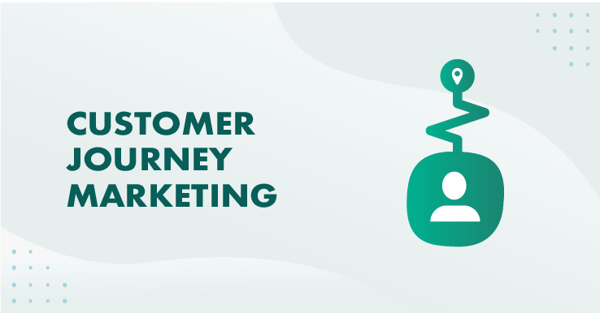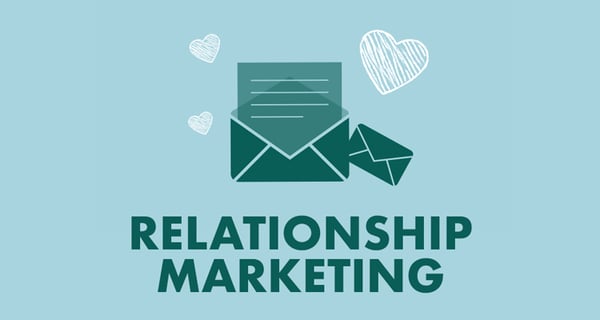Forget everything you know about marketing.
Today, people are no longer following a linear path from awareness to interest to purchase.
They are adopting digital technologies to shift the buying power in their favor, and it’s re-shaping the traditional way of marketing to win them over.
In traditional marketing, a customer’s buying decision can be influenced by the seller’s ability to show up at the right moment or touchpoint. These touchpoints are meant to educate and guide potential customers toward choosing one particular business over any other.
Unfortunately, this style of marketing fails to capture all the key buying factors due to the explosion of product choices, digital channels, and innovative technologies.
“Any business owner knows,” says Eric Rea, CEO of Podium, “your most authentic and impactful advocate is a happy customer, and technology has made every customer’s voice extremely powerful.”
In Podium’s report on online reviews, consumers want to hear about your experience with people before they make a buying decision.
- 93% of people say online reviews impact their buying decisions
- 63% of people are willing to pay up to 15% more, if assured they'll have a better experience
- 82% of people say the content of a review has convinced them to buy
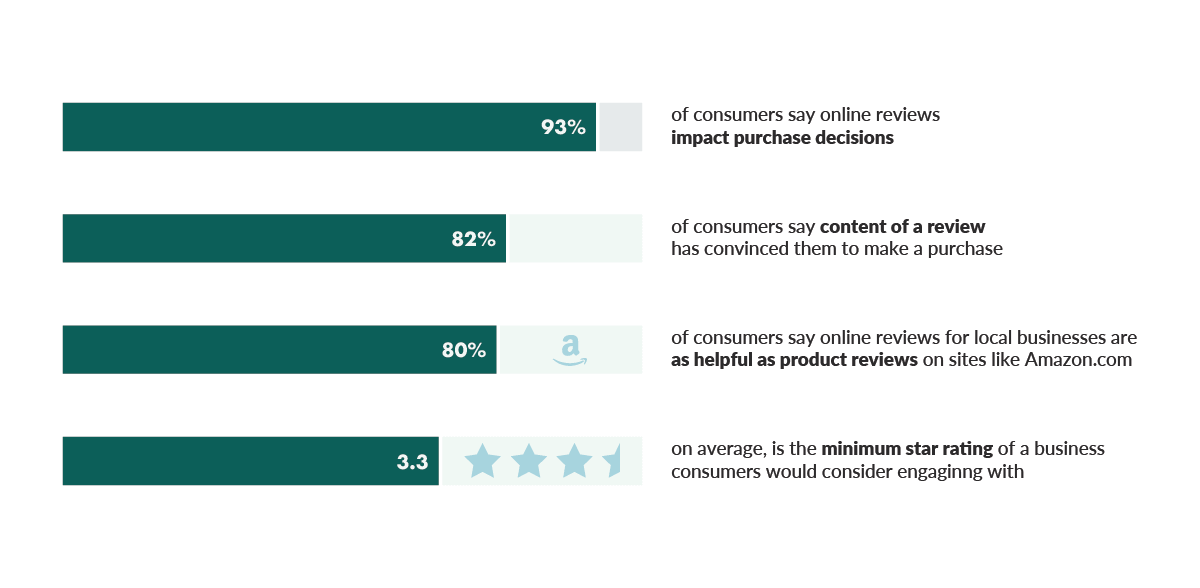
As customers become more highly-informed buyers, it is radically changing the consideration and evaluation phases throughout their purchasing process.
Emerging demands for companies
Companies are learning how to improve their marketing with automation and AI.
However, nothing can replicate the essentials that form human connections.
In a report by Deloitte (2019), companies that focus on the human experience are twice as likely to outperform their peers in revenue growth over a three-year period and have 17 times faster growth than those who do not.
Amelia Dunlop, US head of customer strategy and applied design for Deloitte Digital, says “Consumers, particularly the millennials, want a brand to be an extension of their values.”
Does this mean that the four ‘Ps’ of marketing (product, price, promotion, place – see below) are no longer relevant?
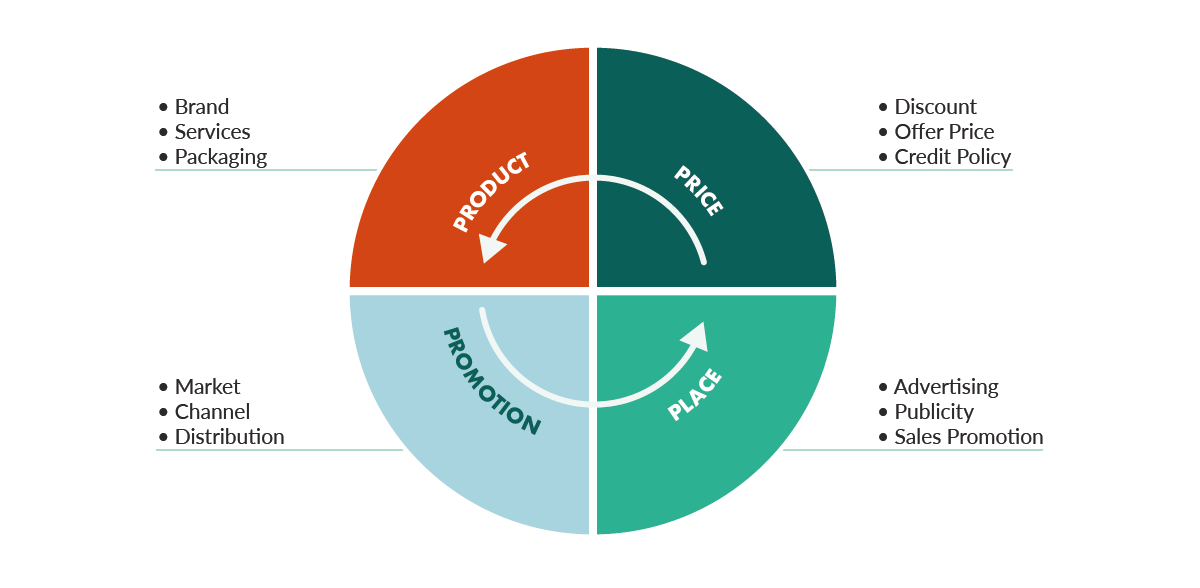
Absolutely not.
Instead, this reflects customers’ growing demands for companies to merge their values into a customer-centric experience.
According to McKinsey, customer-experience excellence starts with a clear vision at the top that shared by employees who are in direct contact with customers.
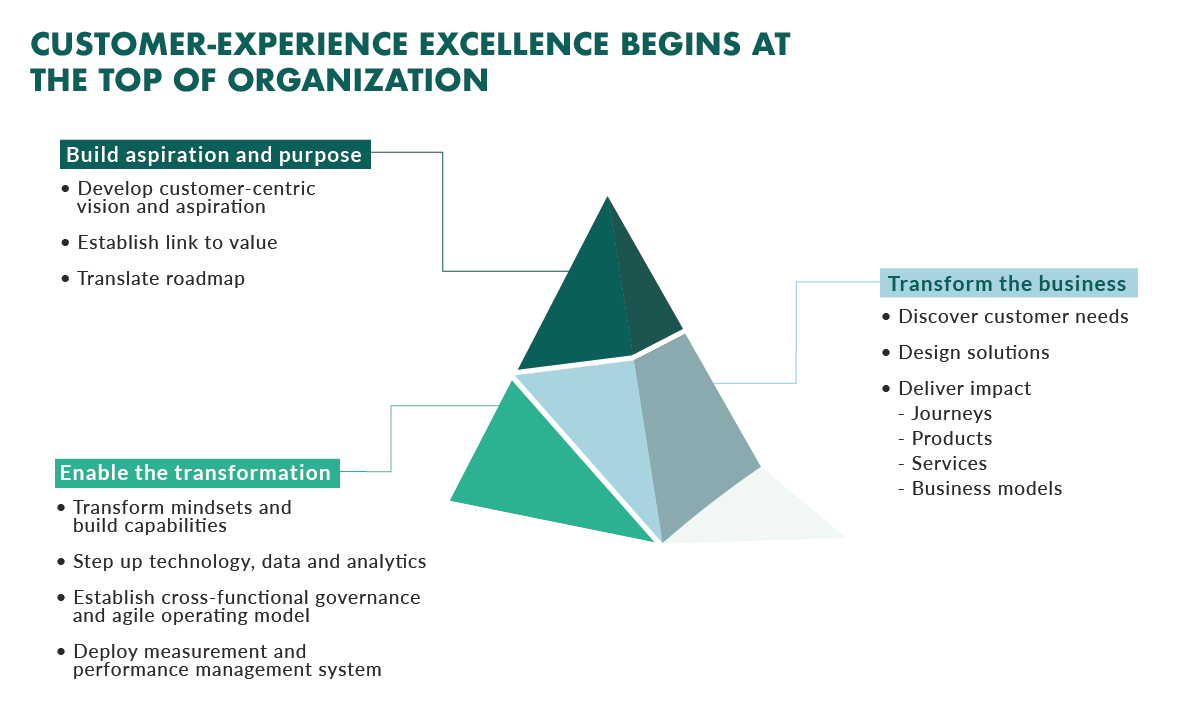
McKinsey also found companies that prioritized customer experience achieved three times the shareholder returns than companies that did not.
Let’s take a closer look at the relationship between customer experience and marketing.
Prioritizing relationships in marketing
Customer experience is about making every interaction with your company, both memorable and meaningful.
This is not transactional – it’s relational.
Relationship-led marketing is a way of doing business that focuses on a positive customer experience before and after the sale to drive repeat business, customer loyalty, and profits.
Does your company take a relationship-led approach?
Even if you are using the latest technology or modern design, if you don’t focus on (or invest in) the most important aspect of customer experience – relationships, your marketing efforts won’t go far.
To drive sales growth and repeat business, everything comes down to understanding and then implementing one strategy: marketing builds relationships, relationships establish trust, and trust equals sales.
Tap into your customer’s intent
If people don’t connect with your business, they will never become customers. To develop a truly “successful” marketing strategy, understanding your customers’ intention is the only way to do it.
Predicting intent and anticipating needs throughout a customer’s journey offer a unique opportunity to create a positive experience with your business. Because when people can rely on your business, your business can rely on growth.
In Google’s Consumer Insights, they claim that people are signaling their intent every time they turn to digital for assistance on their purchasing needs.
However, to know your customers on a deep level that can predict intent is a challenge. That’s where innovative technology plays a pivotal role.
David Baekholm, SVP of growth marketing at HomeAway says, “If someone comes to our site, for example, we can say, ‘that person behaves exactly like someone who is going to convert in two weeks’ time.’ We then know what types of content and messaging might be useful for this person so we can keep them engaged until they’re ready to buy.”
The ability to identify, track, and log website visitors is a powerful method for gaining a snapshot of your customer’s intention. Since people make buying decisions at every step of their journey, marketers can take a proactive approach that builds customer relationships faster.
Act on opportunities from customer data
Data reveals the mysteries of customer behavior and contains the secret to driving higher levels of growth and profitability.
According to Gallup, companies that apply the principles of behavioral economics outperform their peers by 85% in sales growth and more than 25% in gross margin.
Traditional data — stock price, earnings per share, profit, and growth — is how business leaders determine their company's health. While these data points will always serve as an indicator for a company’s performance, they do not include the complex details that capture human interactions, psychology, and econometrics.
Gallup’s research takes a critical look at financial metrics as an indicator of organizational health and sees the following problem:
- Sales, profit, and similar data shows how a company is doing and will do. However, it is not an indicator of organizational health or performance as the data cannot reveal what led to a given level of performance in the first place.
Beyond the end-goal metrics of sales and profit, marketing needs relevant customer data to be effective.
For example, information on what customers purchase, how many times they contact customer service, and how long they stay on a web page are insightful details on buying potential and preferences.
In a joint survey between Adobe and Econsultancy, 604 marketers say they want better use of data to double-down on more effective audience segmentation and targeting.
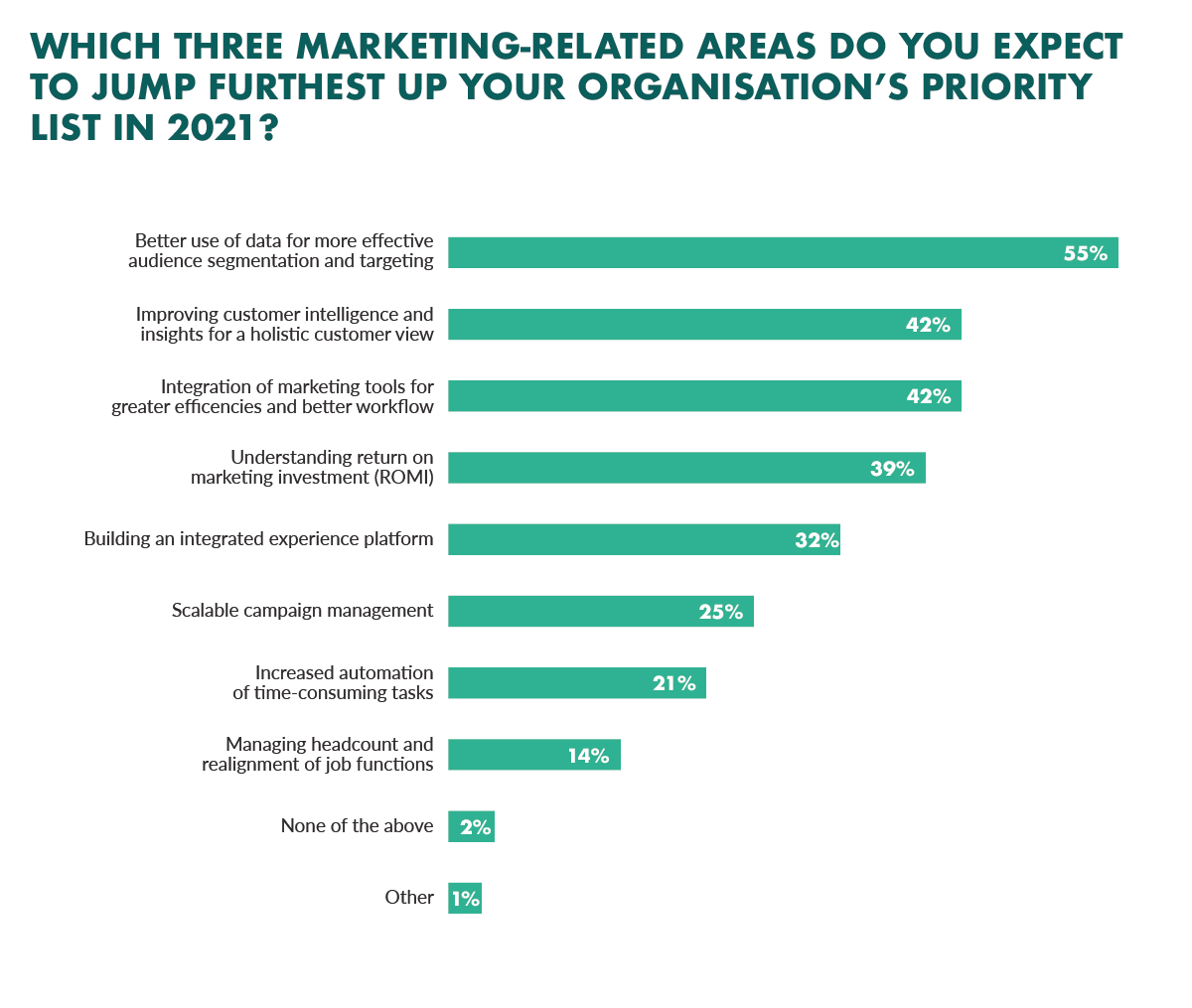
To better capture and coordinate customer data, Customer Relationship Management (CRM) is the key to unlocking growth opportunities.
Here’s a glimpse of the customer information you can access from a CRM database:
- A contact’s name, title, and email address
- Dates when you communicated and what you discussed
- Lead source, in terms of acquisition and revenue
- Customer orders and how much they spent
- Website visits or other online engagements
- The names of your customer's, their birthday, or any other personal data you need to build a great relationship
With this data, your marketers can execute campaigns that connect with new and potential customers at every level of their journey.
Reimagine the customer journey
Marketing strategies are often oversimplified using the concept of a funnel. While this offers a framework to guide actions and efforts, it does not provide a real-world view of the customer journey.
Buying decisions are complex.
In Gartner’s report on B2B Buying Journey, they propose that customers will make a purchase only after completing all of the following set of tasks:
- Problem identification
- Solution exploration
- Requirements building
- Supplier selection
- Validation
- Consensus creation
Instead of progressing down a funnel, customers are looping and repeating these tasks until they have the confidence to make a final purchase decision.
In this way, a customer’s journey is “a lot less like a step-by-step linear process and a lot more like a big bowl of spaghetti.”
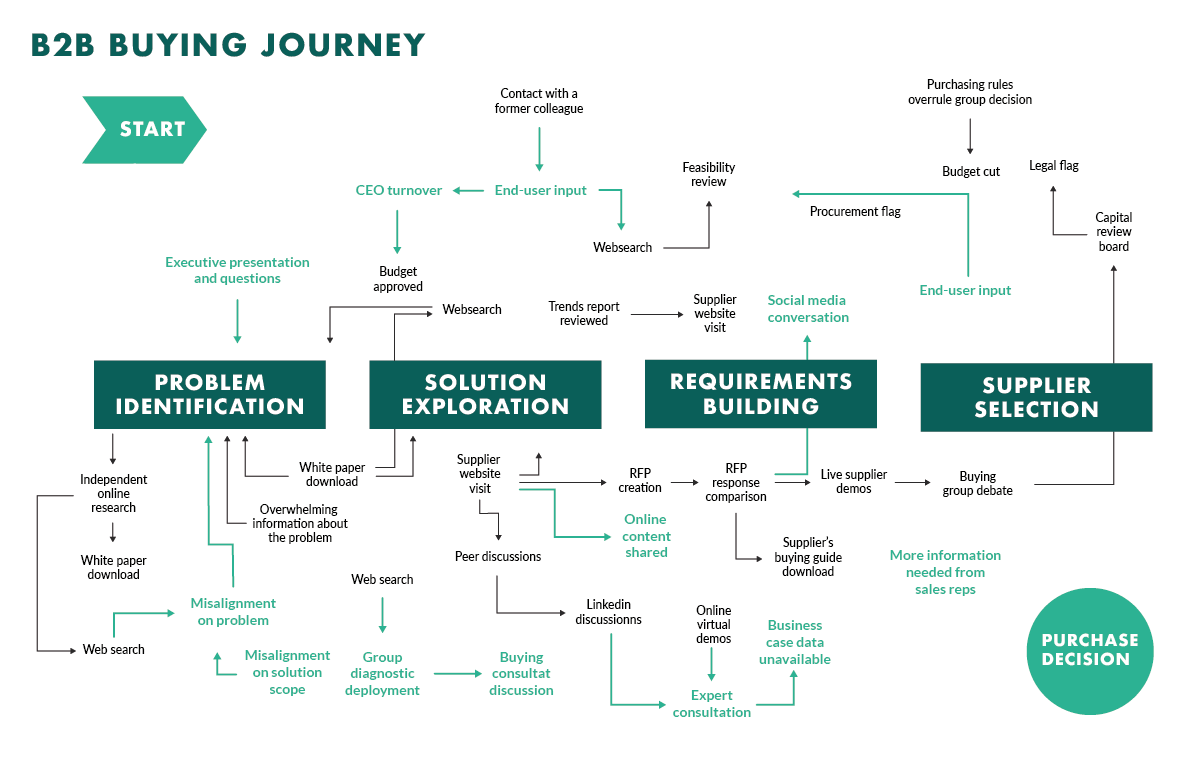
But what does this mean for marketers? And how does it relate to generating sales?
Gartner continues by suggesting that marketing and sales are not serial processes. Typically, there would be a threshold or trigger that would transfer marketing’s efforts to a sales rep.
Instead, marketing and sales should work in parallel together.
In other words, marketing and sales — whether digital, in-person, or both — should function side-by-side to win over customers now and in the future.
Achieving that may sound overwhelming.
However, companies that can effectively create and curate information that accelerates the completion of decision-making tasks will become marketing leaders in their respective industries.
Growth is correlated to customer experience
No matter how great your information may be, the real battle for acquiring and keeping customers comes down to providing the best customer experience.
In 2019, PwC conducted extensive research on the importance of customer experience. Here are a few of their top findings:
- 60% of all consumers said they’d stop doing business with a brand if the service they received was not friendly.
- 59% will walk away after several bad experiences, 17% after just one bad experience.
- 46% of all consumers will abandon a brand if the employees are not knowledgeable.
Here are all the main reasons why customers stop doing business with a company:
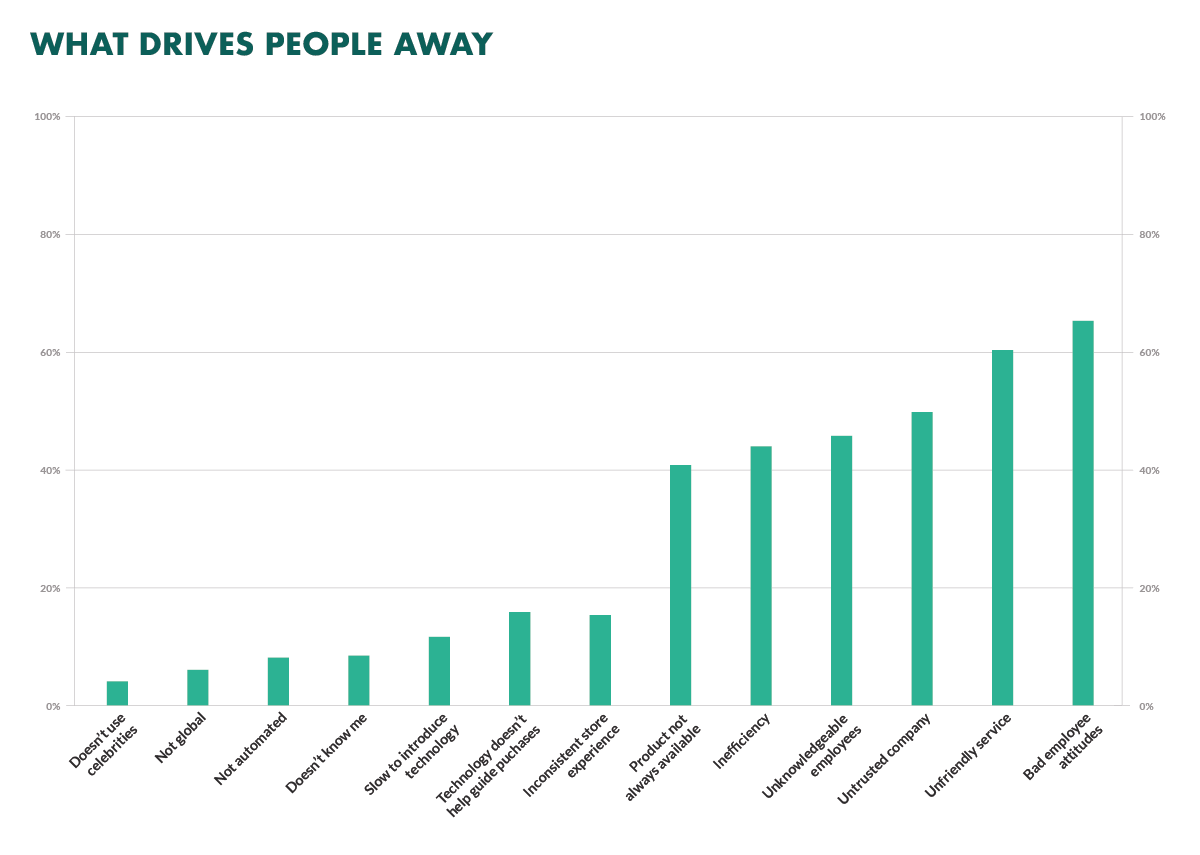
In Qualtrics and Forrester’s Total Economic Impact report, creating a customer experience solution led to a 633% return on investment over 3 years and a payback period of less than 3 months.
Those are significant numbers!
Fortunately, innovation and technology are playing a big role in improving customer experience, and stimulating growth:
- Automation elevates and improves customer experience. Although automation can be highly technical, the end result provides customers with simple, useful, and increasingly engaging experiences.
- Personalization turns a customer’s personal information – either based on past interactions or collected from external sources – to instantaneously customize their experience. From addressing customers by their first name in communications to providing relevant content based on customer preferences, this simple strategy encourages customers to take the next step in their journey.
- Contextual interactions provide customers with messages, communications, and interactions that use relevant knowledge based on their current stage in the customer journey. Using customer’s behaviors, preferences, and previous history allows for an uninterrupted experience at their moment of need.
- Journey innovation focuses on identifying and providing new sources of value for both the customer and your business. Sorting through data and insights can uncover new services or opportunities that best serve a customer.
But, it’s important to understand that any attempt to execute customer experience strategies successfully requires full commitment and acceptance on every level within your organization.
Achieving growth is a top-down process
Strategies that aim to improve customer experience quality is a clear path to improve marketing performance, revenue growth, and customer loyalty.
In order to achieve these goals, both employees and C-level executives need to align with their company's values and mission strongly.
But is that enough?
Simen Sinek approaches organizational growth by addressing the “why” behind a company’s operations. He challenges organizations and their core leaders to ask the following fundamental questions:
- Why are some people and organizations more innovative, more influential, and more profitable than others?
- Why do some leaders command greater loyalty from customers and employees alike?
- Even among the successful companies, why are so few able to repeat their success over and over?
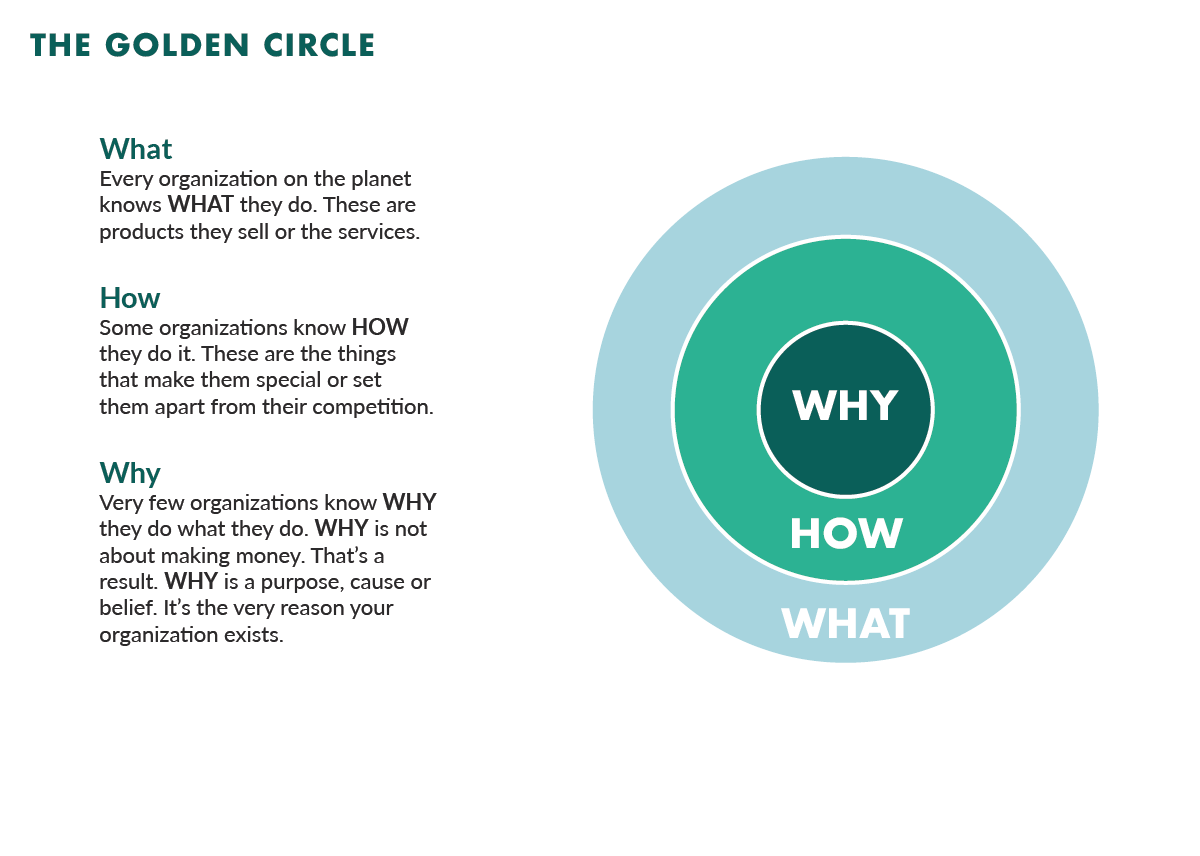
Simon offers the Golden Circle – a framework to guide leadership toward defining their purpose and expressing it in a way that connects with people on a human level.
“When most organizations or people think, act, or communicate they do so from the outside in, from what to why. And for good reason – they go from clearest thing to the fuzziest thing. We say what we do, we sometimes say how we do it, but we rarely say why we do what we do.”
“When communicating from the inside out, however, the ‘why’ is offered as the reason to buy and the ‘whats’ serve as the tangible proof of that belief.”
Relationships are foundations for business success
As buyer power continues to shift into the hands of customers, having the ability to build high-value relationships will pay off more in the long run.
Relationship-led marketing gives marketers new ways to find and provide value to customers. It goes beyond financial metrics by focusing on what matters most in business and life: experience.
Even though the bottom line of any business is to make money, the only way to achieve that goal is to build genuine relationships with customers.
